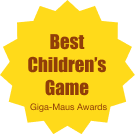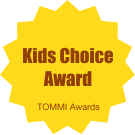
Senior UX Designer at LEGO
2 Million
Players
50+
UI Systems Designed
100+
Play Testers In-House
My Role & Leadership
Senior UX Designer
I was part of a larger UI team that included a UI Art Lead, UI Artists, and UI Developers. While artists crafted visually stunning pre-viz mockups, I grounded the experience in user needs and technical feasibility.
Led UX Design from early concept to post-launch
Designed onboarding, engagement loops, retention mechanics, and monetization paths
Delivered 50+ gameplay and platform UI systems including build tools, inventory, chat and controls
Connected experience from marketing site and installation tool through the in-game systems
Took on project management for localization workflows, coordinating vendors and tooling for global launch readiness
Global Partnerships
Working across teams in Denmark, the UK, and the US, I helped unify strategy and execution.
Key initiatives included:
Participated in design workshops at LEGO HQ in Billund
Co-facilitated user testing at LEGO’s England offices.
Advocated for improvements to Brick-Building feature to improve adoption and engagement scores
Encouraged game designers to act on LEGO’s extensive qualitative and quantitative user research findings
Design Philosophy
My approach combined immersive storytelling with usability and safety, tailored to the needs of a young, global audience.
Created fun and intuitive interfaces grounded in child-friendly mental models
Prioritized safety in identity, chat, and social systems in compliance with global child protection laws
Promoted iteration through deep collaboration, user testing, and validation with LEGO’s internal research teams
LEGO Universe Quick Overview
LEGO Universe was a fully featured MMO game where kids could safely explore, build, and play in a shared online LEGO world. Developed by NetDevil and later acquired by the LEGO Group, the game brought together storytelling, creativity, and social play in a virtual LEGO environment.
It was developed by NetDevil (which the LEGO Group acquired) and launched in October 2010.
Concept Art by Mike Rayhawk

The Challenge
How do you design an online LEGO brick-building experience for kids that’s fun, safe, and globally accessible?
User Needs & Pain Points
Fun, engaging gameplay with enough depth and content to retain interest month after month
Build tools for creativity and problem-solving without overwhelming complexity
Easy onboarding for novice players (ages 8-12)
Parents needed assurance of safe online play
Business & Technical Challenges
Maintain LEGO’s quality and child safety standards
Create diegetic UI for immersive 3D play
Optimize for low-spec, hand-me-down PCs
Support global markets with localization
Meet COPPA and child privacy requirements
Navigate acquisitions, layoffs, and leadership changes
Launch amid the 2008 economic downturn
Our Approach
Three major UI systems showcased in mini case studies below.
Minifig Creator
What it was
A guided, interactive experience for kids to build and customize their in-game LEGO minifig from hair to pants.
The UX Challenge
Design an engaging 3D experience that will wow and delight kids, while being very easy to use. This was the first major gating point in onboarding—a critical moment where failure to complete the flow often led to abandonment.
Wireframe & Flow
Outlined core functionality to guide art and dev.
Random Button
Gave players a quick starting point to reduce decision fatigue.
My Role & Approach
Owned UX design to ensure the system was intuitive and joyful
Collaborated with UI artists who developed 3D "previz" animations to enhance visual fidelity and playfulness
Partnered closely with UI programmers to navigate the challenges of 3D UI
Created wireframes, prototypes, and tested several variations with kids to identify and address points of confusion
Artist Concept
Inspiration from the art team that I translated into a usable UX.
Mode Entry
Animated button press + help tip were added after user confusion in testing.
3D Prototyping
Created & tested spinning mechanics and mouse interaction.
Overcoming Drag to Spin Challenges
Mouse control was tricky for users - so we added scroll wheel and eventually UI buttons for accessibility.
Minifig Creator: Design Outcome
Second only to brick building, this was the most expensive UI in the game and saw the most user testing. Many 8–12 year olds could complete it unassisted, yet some usability issues persisted—showing the challenge of intuitive 3D customization for kids.
It became the game’s first impression, sparking creativity while teaching basic controls. Patterns from this system were reused in the rocket and race car builders, and it featured prominently in trailers and marketing.
Onboarding & Contextual Guidance
What it was
An in-world onboarding experience that gradually introduced core mechanics within LEGO Universe’s opening level.
The UX Challenge
Teach controls and interaction in a complex 3D world without overwhelming the player. Many 8–12 year olds had no MMO or PC gaming experience, so it had to be simple for kids yet immersive within the LEGO Universe.
Challenge: Complex to Intuitive
Move, Rotate, Zoom, Attack, Interact, Hotkeys…oh my! Keyboard + mouse controls overwhelmed many first-time players, especially younger ones.
My Role & Approach
Led UX design for onboarding, working cross-functionally with artists, level designers, writers, and engineers
Advocated for step-by-step mechanic introduction to reduce cognitive load
Partnered with the camera team to design reactive camera behavior that highlighted areas of interest and reduced disorientation
Iterated extensively on keyboard/mouse control mapping through in-house and kid testing sessions
Wrote tutorial script and integrated Patrick Stewart’s voiceover direction as a guiding presence to reinforce clarity and delight
Championed the use of diegetic UI—projected visuals, signs, and in-world prompts—to maintain immersion while teaching
Calm & Encouraging Onboarding
We ended up teaching core mechanics gradually—with 3D tips, spaced learning, and Patrick Stewart cheering kids on.
Diegetic UI
Placing instructional images and text directly above the 3D characters allowed kids to see they were interactive and recall the hotkey.
User Testing
We addressed usability issues quickly by combining rapid in-house iteration with formal quarterly testing led by Bridgette Braig (pictured above).
Diegetic UI
Dynamically lit keys reinforced success as players moved. We taught both WASD and arrow keys to accommodate split preferences and comfort levels.
Onboarding & Tips: Design Outcome
The onboarding level became a model for teaching through play: players learned essential mechanics through interaction, not menus.
In-play prompts were clear and actionable, contributing to much higher tutorial completion rates in usability tests
Diegetic UI was praised for keeping the experience immersive and story-driven
Elements of this onboarding system were reused in future level intros and event-based tutorials
From Crying to Cheering
Early level designs reflected adult skill levels—not an 8-year-old’s. After one kid cried during testing, the team shifted focus and started designing for the player, not themselves.
LEGO Build Experience
What it was
A core system in LEGO Universe that allowed players to build brick-by-brick or with modular pre-designed models in their own world—bridging the physical play pattern of LEGO into a digital MMO context.
The UX Challenge
Recreate the joy of real LEGO building within a constrained digital interface—precise for builders, intuitive for kids, and performant in real-time 3D multiplayer. Support hundreds of brick types in official colors for ordering your own real set, and add modular scripting so players could animate and interact with their creations.
Challenge: Minifig-First Design
Leadership favored minifig-centered interaction, but kids preferred dragging pieces onto the rocket—walking felt slow and confusing.
Winner: Mouse Control
Added drag-and-drop, forgiving drop zones, highlights, and smarter tooltips—walking the minifig became optional.
My Role & Approach
Collaborated on brick-building systems across modes: free build, modular creation, scripting, and mission-based challenges
Participated in design workshops at LEGO HQ in Denmark to align with their creative vision
Partnered with artists and engineers on brick logic, snapping, and camera controls
Prototyped and tested interfaces for clarity, creative flow, and discoverability
Balanced flexibility with guardrails to support new users
Used visual feedback and diegetic cues instead of heavy UI overlays
Poor Readability
Early HUD elements were designed to be minimal, but ended up too hard to see—especially against bright build areas.
Improved Contrast
We added solid backgrounds and clearer color choices to make key controls like camera and undo/redo easier to spot and use.
What We Shipped (and What Dreamed Of)
Brick-by-Brick
✨ Most creative, most difficult.
This mode captured the spirit of real LEGO building, but proved too complex for many kids. Precision placement in 3D space demanded fine motor skills, the brick library was overwhelming and poorly organized, and the experience lacked the tactile satisfaction of physical LEGO.
Modular Building
🧩 Faster, accessible, and forgiving.
Created to address brick-by-brick friction, modular tools let kids quickly assemble castles and forts. While less intuitive than the modular rocket and race car tools—and lacking snapping behavior—it greatly sped up building and kept players engaged.
Scripted Actions
⚙️ Powerful, but incomplete.
We introduced modular scripting to animate builds—make platforms move, play sounds, or become smashable. The potential was huge, but limited tutorials and late-stage development meant few players discovered it, and even fewer stuck with it.
Design Outcome
The brick building system was one of the most “LEGO” parts of LEGO Universe. We iterated to make building faster, more intuitive, and better aligned with how kids created digitally.
It was featured in press and conference demos, including Comic-Con and a LEGOLAND exhibit—but adoption remained low. In-game building wasn’t as simple, quick, or satisfying as in the real world, and Minecraft’s release offered a much simpler build interface. As gameplay and combat stayed the core focus, funding and iteration for building limited its polish and long-term engagement.
Overall Impact
LEGO Universe (live from 2010–2012) was an ambitious kid-friendly MMO blending LEGO’s creative building ethos with online adventure. It attracted nearly 2 million registered players in its first year, with press and players praising its imaginative worlds and polished UX. Themed expansions like Ninjago and community events kept engagement high, while achievements, mini-games, and safe online spaces showed how a well-designed LEGO sandbox could delight players and foster community.
Despite these wins, the game struggled to sustain itself. The DVD-plus-subscription model, later transitioned to a freemium download, failed to convert enough paying users. Safety requirements meant all player-generated content was moderated—driving up costs and frustrating players who wanted fewer restrictions. High operating costs ultimately led to its closure in 2012, leaving lessons about balancing gameplay, creativity, safety, and sustainability in online worlds.




